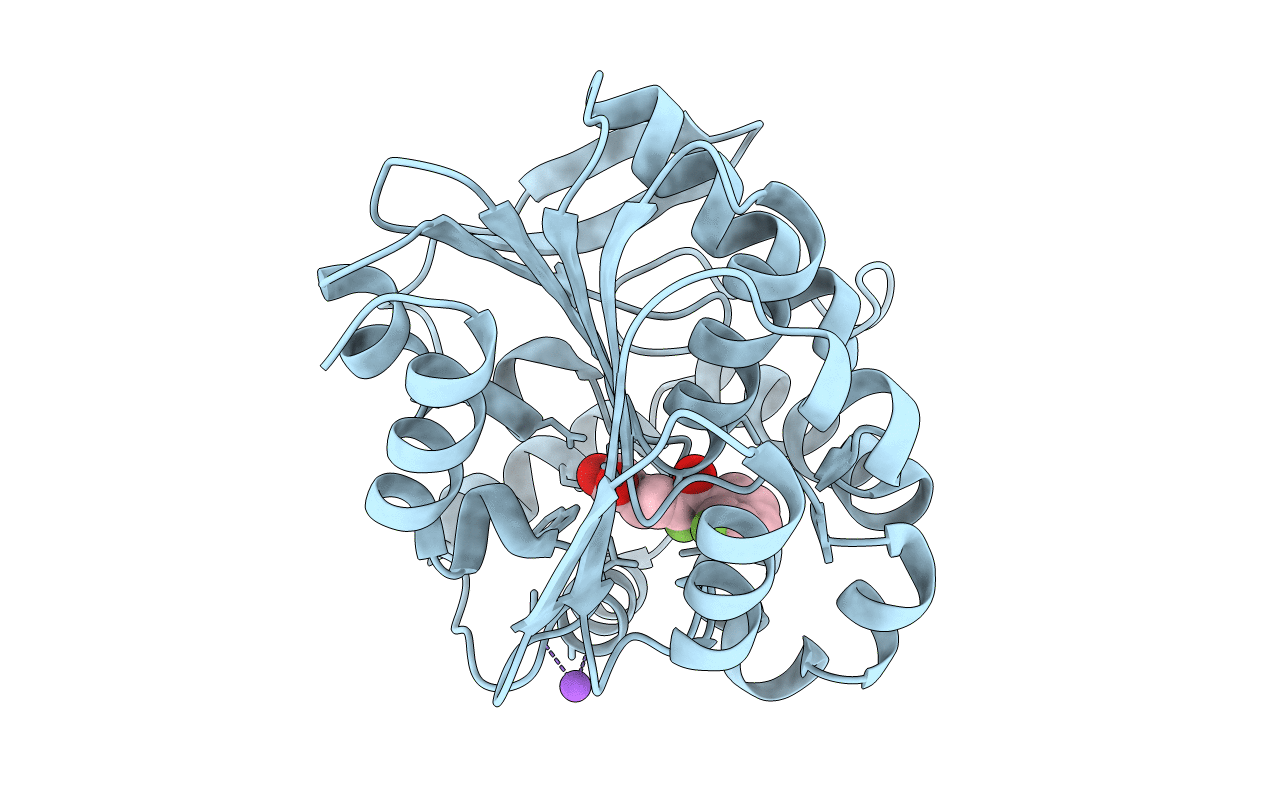
Deposition Date
2013-07-29
Release Date
2013-10-09
Last Version Date
2024-02-28
Entry Detail
PDB ID:
4LXI
Keywords:
Title:
Crystal Structure of the S105A mutant of a carbon-carbon bond hydrolase, DxnB2 from Sphingomonas wittichii RW1, in complex with 5,8-diF HOPDA
Biological Source:
Source Organism:
Sphingomonas wittichii RW1 (Taxon ID: 392499)
Host Organism:
Method Details:
Experimental Method:
Resolution:
2.17 Å
R-Value Free:
0.25
R-Value Work:
0.20
R-Value Observed:
0.20
Space Group:
P 65 2 2


